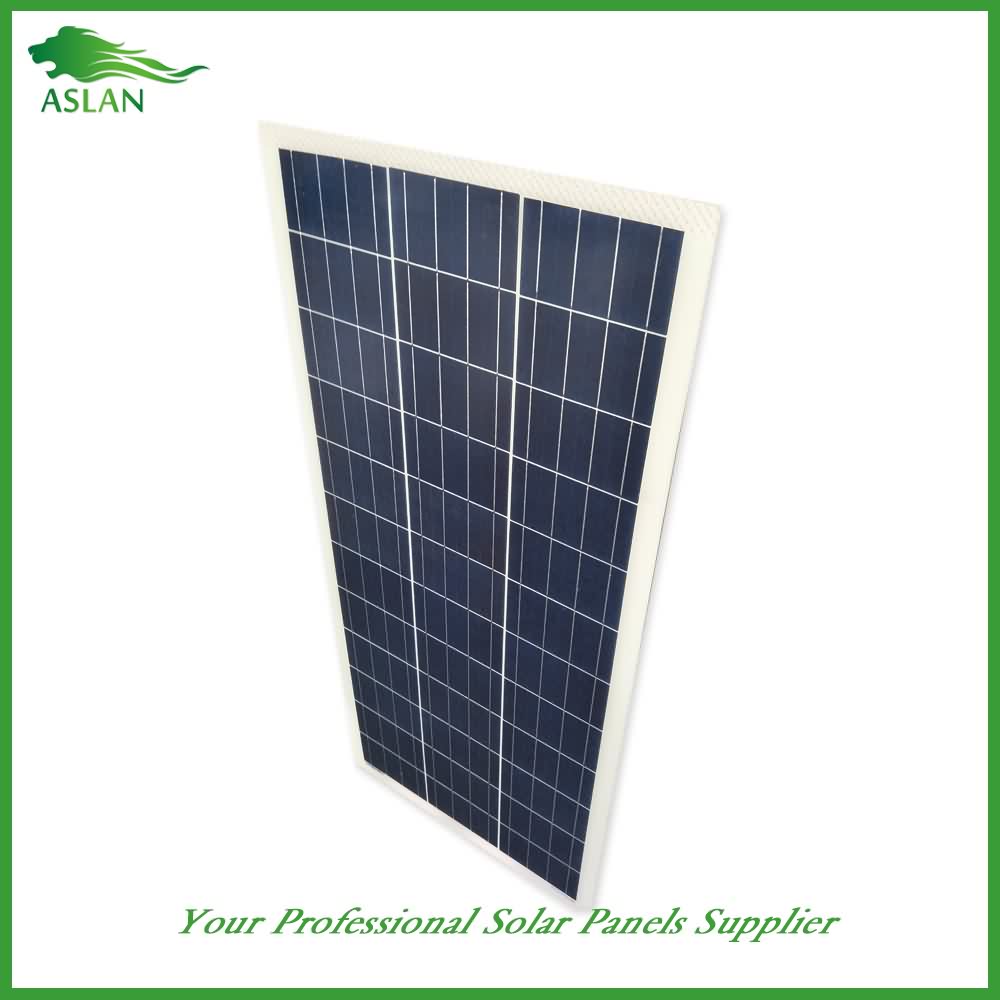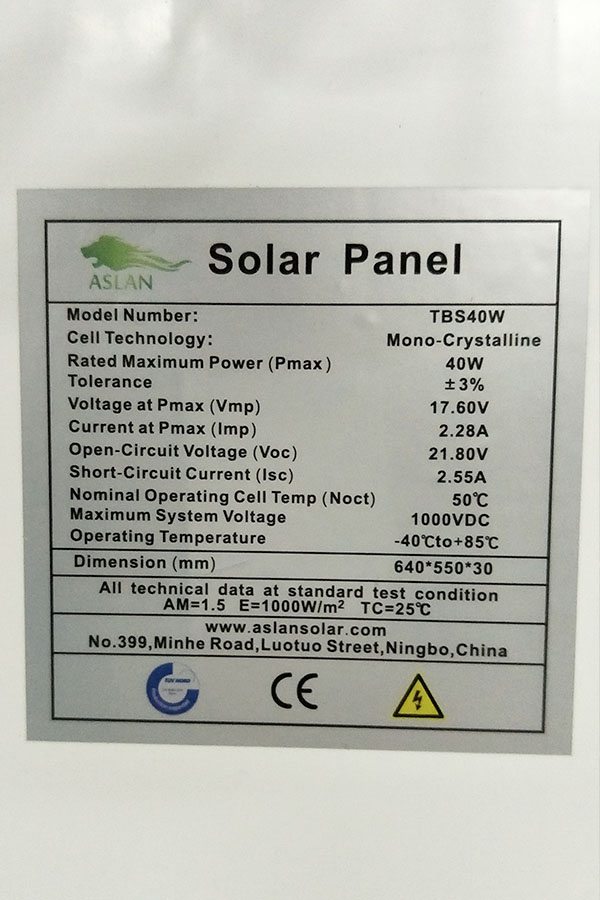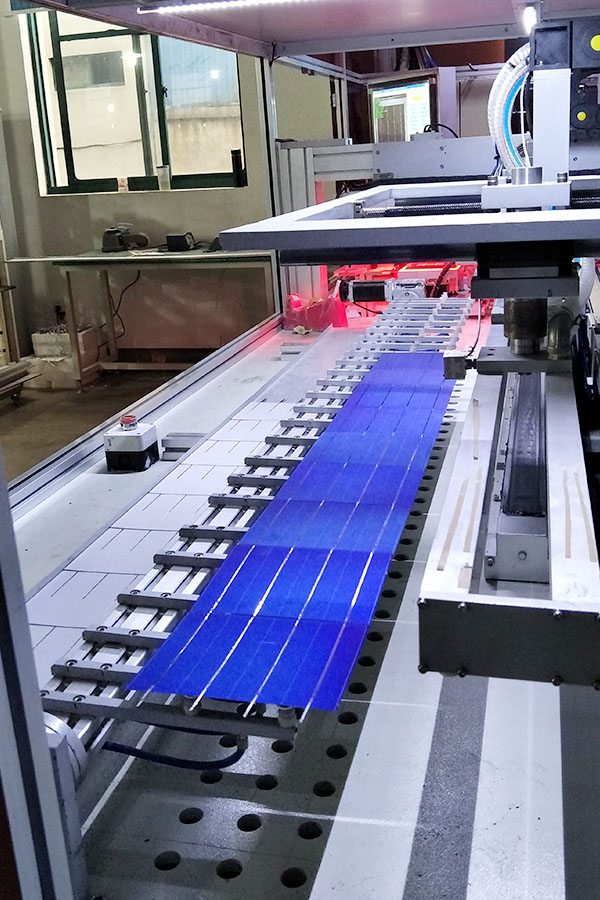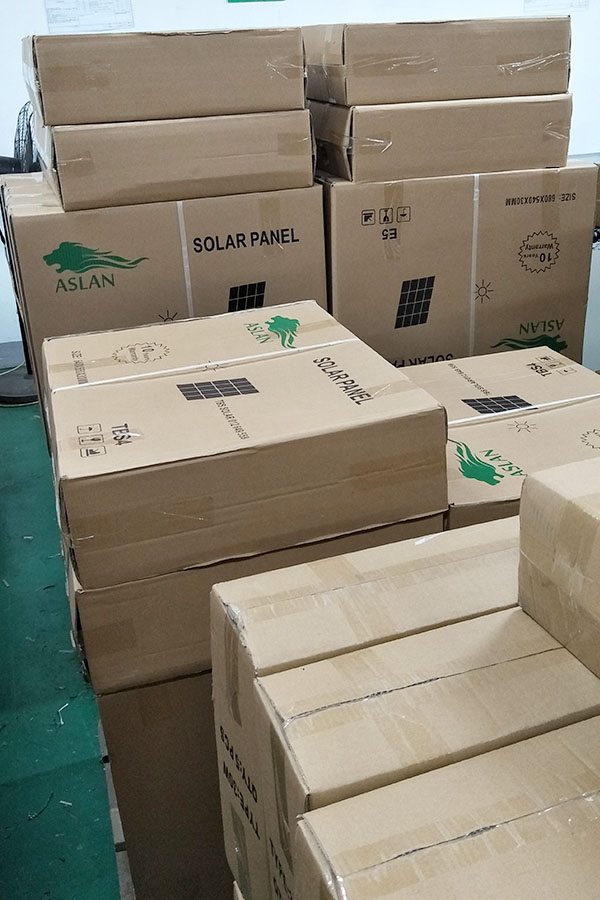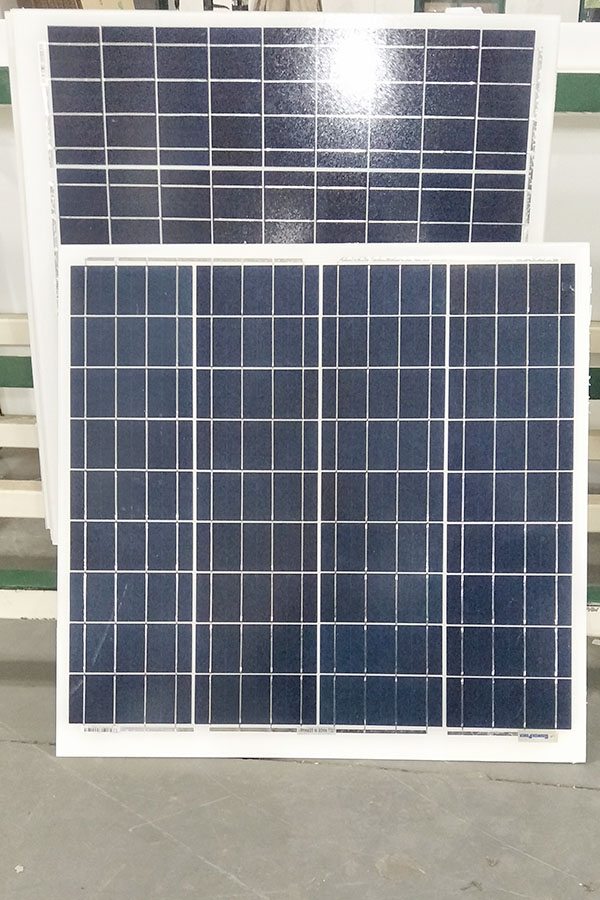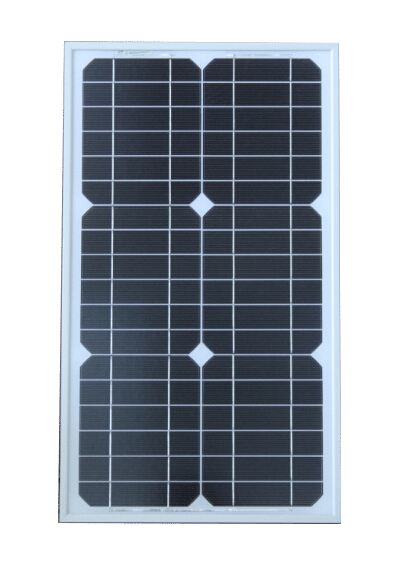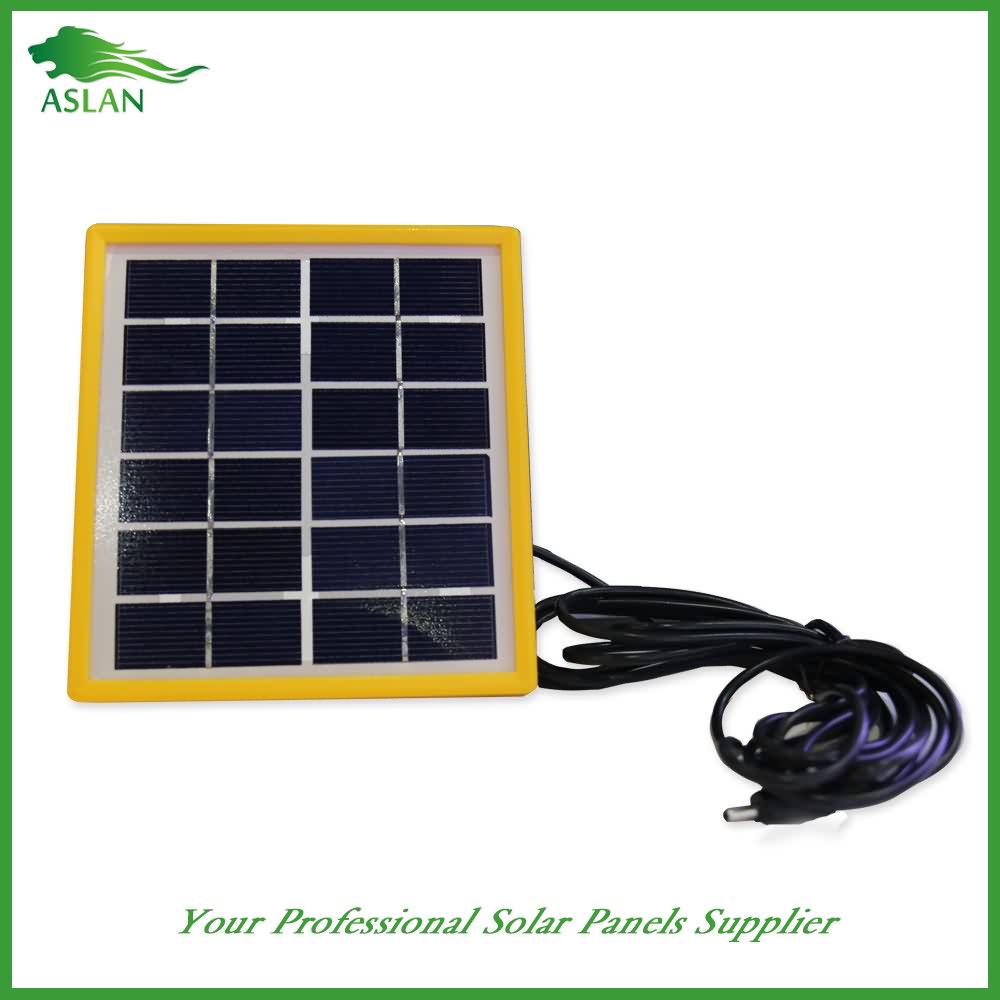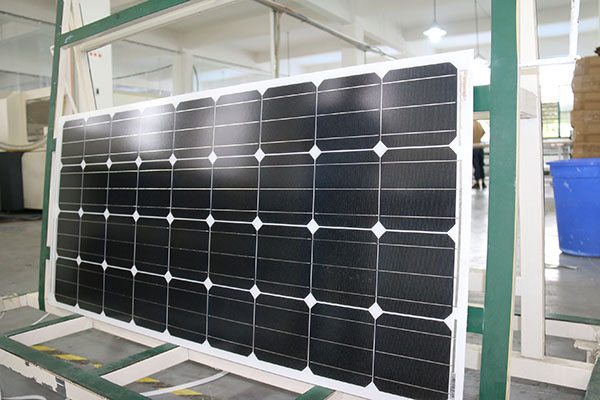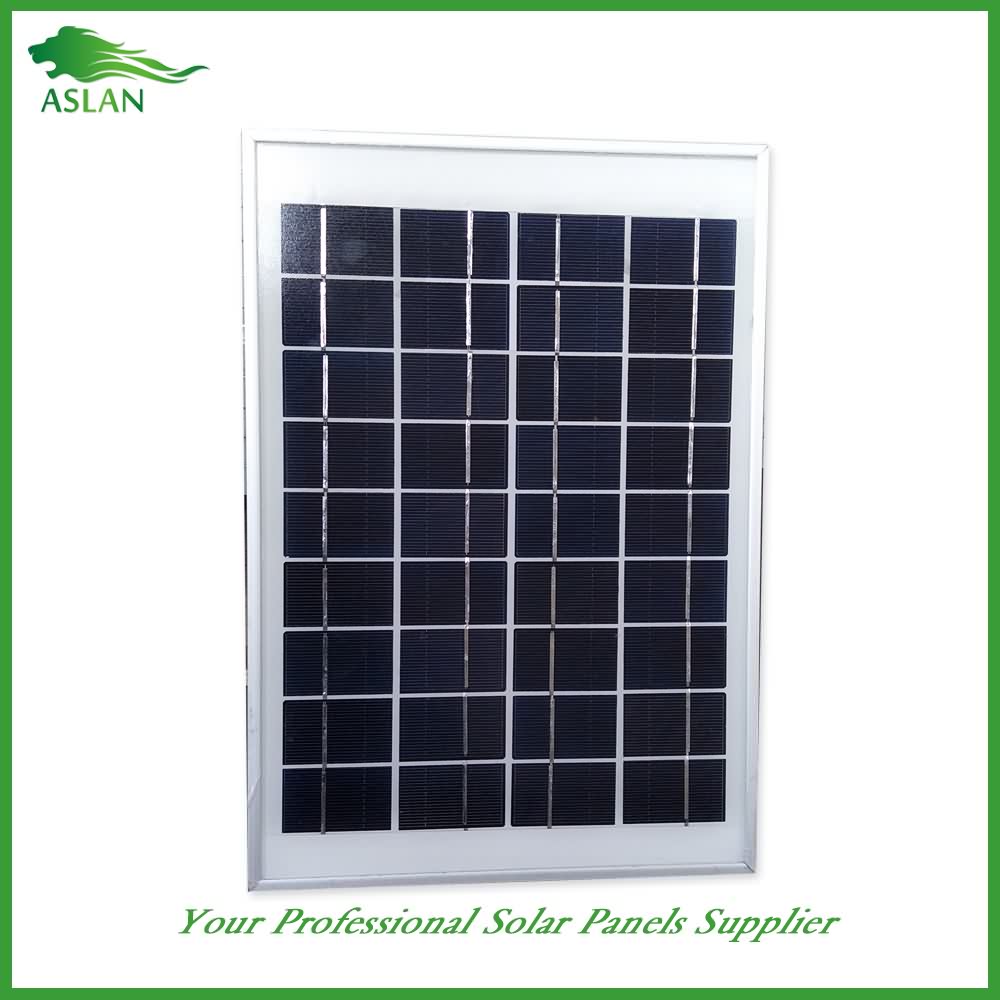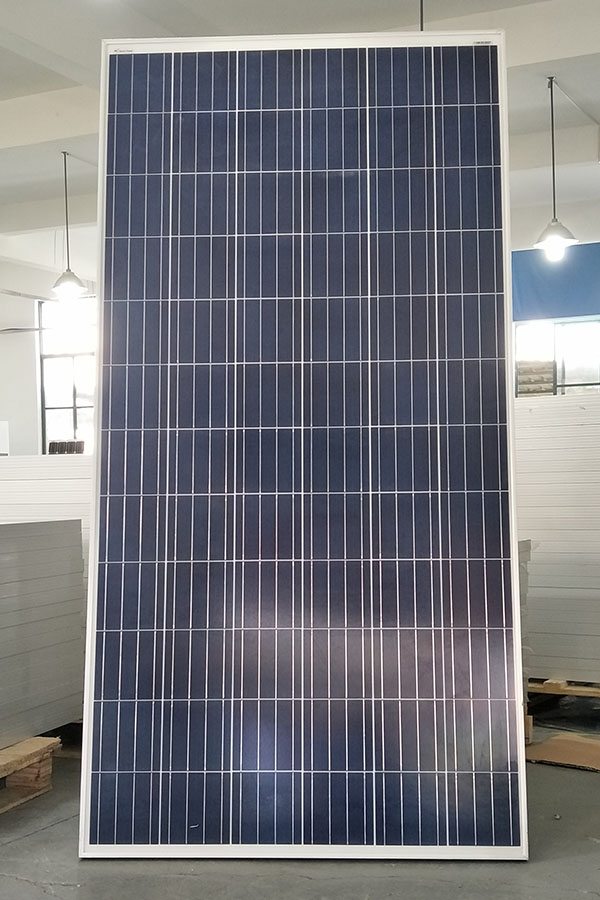Best Price on Poly-crystalline Solar Panel 80W for Denver Factories
Short Description:
Bear "Customer first, Quality first" in mind, we work closely with our customers and provide them with efficient and professional services for Best Price on Poly-crystalline Solar Panel 80W for Denver Factories, Our professional technical team will be wholeheartedly at your service. We sincerely welcome you to visit our website and company and send us your inquiry.
Poly-crystalline Solar Panel 80W
Technical parameter
Maximum Power(W) 80W
Optimum Power Voltage(Vmp) 18.13V
Optimum Operating Current(Imp) 4.70A
Open Circuit Voltage(Voc) 21.79V
Short Circuit Current(Isc) 5.16A
Mechanical Characteristics
Cell Type Poly-crystalline 156x104mm (6 inch)
No of Cell 36 (4x9pcs)
Dimensions 1008x678x35mm
Weight 8.3KGS
Front Glass 3.2mm,High Transmission, Low Iron,Tempered Glass
Junction box IP65 Rated
Output Cable TUV 1×4.0mm2/UL12AWG,Length:900mm
Temperature and Coefficients
Operating Temperature(°C): -40°C ~ + 85°C
Maximum System Voltage: 600V(UL)/1000V(IEC) DC
Maximum Rated Current Series: 15A
Temperature Coefficients of Pmax: -0.435%
Temperature Coefficients of Voc: -0.35%
Temperature Coefficients of Isc: 0.043%
Nominal Operationg Cell Temperature (NOCT): 47+/-2°C
Materials of solar panel
1).Solar Cell——Poly-crystalline solar cell 156*104mm
2).Front Glass——-3.2mm, high transmission, low iron, tempered glass
3).EVA——-excellent anti-aging EVA
4).TPT——-TPT hot seal made of flame resistance
5).Frame——anodized aluminum profile
6).Junction Box——-IP65 rated, high quality, with diode protection
Superiority: high quality anodized aluminum frame, high efficiency long life, easy installation, strong wind resistance, strong hail resistance.
Features
1. High cell efficiency with quality silicon materials for long term output stability
2. Strictly quality control ensure the stability and reliability, totally 23 QC procedures
3. High transmittance low iron tempered glass with enhanced stiffness and impact resistance
4. Both Poly-crystalline and Mono-crystalline
5. Excellent performance in harsh weather
6. Outstanding electrical performance under high temperature and low irradiance
Quality assurance testing
Thermal cycling test
Thermal shock test
Thermal/Freezing and high humidity cycling test
Electrical isolation test
Hail impact test
Mechanical, wind and twist loading test
Salt mist test
Light and water-exposure test
Moist carbon dioxide/sulphur dioxide
Installing Solar Panels on Roof Yourself – UPS With Solar Option – Urdu & Hindi
For Complete Article Visit My Website
http://www.naveedprince.com/install-solar-panels
Subscribe Youtube Channel
https://www.youtube.com/user/foxymediaproduction?sub_confirmation=1
install solar panels, install solar panels cost, install solar panels yourself, install solar panels diy, install solar panels on roof, install solar panels on my house, install solar panels cost, how to solar power my home,
solar system,solar panel,solar power,solar energy,solar,how to install solar system,best solar plates,how to check solar plates,solar panels,300w,300w Solar System,Best Solar Panal
solar energy system, best solar panels, solar panel installation cost, installing solar panels on rv
best ups battery backup
home solar system, solar panel installation, solar panel cost, solar energy,
http://www.futureelectronics.com/en/Search.aspx?dsNav=Ny:True,Nea:True,N:4452
Hi, I’m Sean Nantel, here to talk to you today about various types of solar panels, and how you can save money and energy, using solar panels for all kinds of applications.
When it comes to photovoltaic solar energy installation, there are 3 basic types of solar panels.
http://www.futureelectronics.com/en/Search.aspx?dsNav=Ny:True,Nea:True,N:4452
First, let’s talk about monocrystalline solar panels. These use a single ingot of crystalline silicon, which delivers a higher level of efficiency over polycrystalline panels, which use multiple smaller crystals. They are a bit more expensive, however, monocrystalline solar panels generate more watts per square meter, which is critical if space is an issue. The higher efficiency also helps monocrystalline solar panels perform better in low light or shaded conditions. These solar panels are also better suited to high temperature environments; but this isn’t as critical when you consider solar panel efficiency is typically measured at 25 degrees Celsius or 77 degrees Fahrenheit.
Next, we’ll discuss polycrystalline solar panels. While their efficiency has been improving over the years and hasn’t yet caught up with monocrystalline solar cells, polycrystalline panels are a cost effective alternative if you have a good location with good light conditions, very little shade and favorable temperatures. In such settings, the cost per watt of polycrystalline solar panels is better than monocrystalline solar panels.
Finally, amorphous or thin film solar panels are typically created by vapor deposition, similar to printing on a plastic backing. This process makes amorphous solar panels cheaper to produce than crystalline solar panels. However, amorphous solar panels are about 50% less efficient than their crystalline solar panel counterparts. Therefore, a lot of room is required in order to make amorphous solar panels a viable solution to produce solar energy, but they do tolerate high temperatures much better, so a desert environment makes them an ideal solution for an alternative energy provider.
As you can see, it’s important to choose the right solar panel for your photovoltaic solar energy installation, taking into account the location conditions, the amount of room available for solar panels, and the costs versus benefits. In the past, once the installation conditions were studied and the solar panels chosen, the last piece of the analysis would be to pick a central inverter in the case of a grid tie system, or to pick a battery charger and batteries in the case of an off-grid solar electric installation. Today, many more options are available using solar panels for electricity, including turning your solar panel into an ‘AC Solar Panel‘ or a ‘Smart Solar Panel‘.
Call or visit Future Energy Solutions to find out more about crystalline, thin film and custom cut solar panels to fit any application.
http://www.futureelectronics.com/
